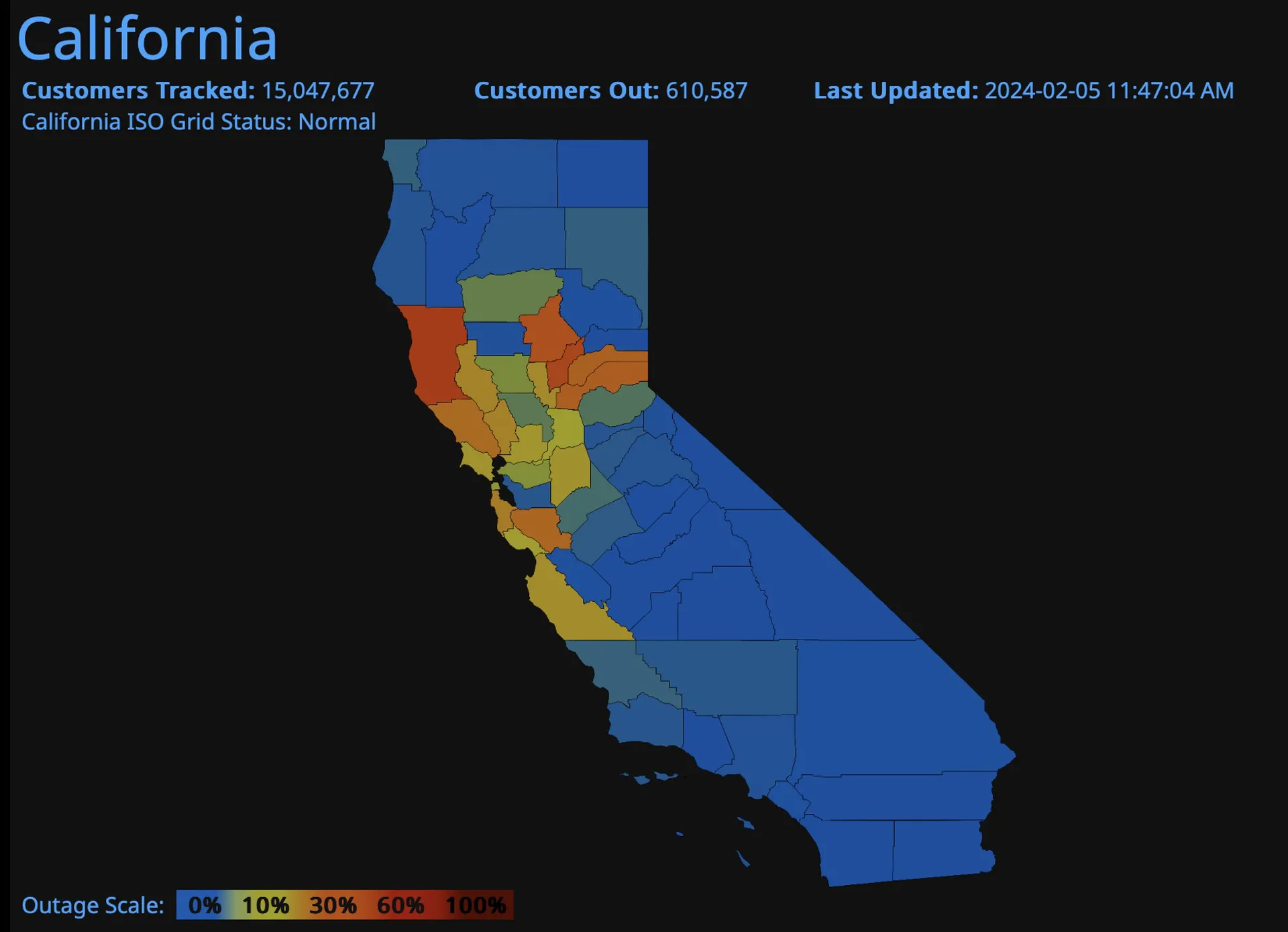Image: poweroutage.us
California finds itself under siege as a formidable storm unleashes its fury, prompting widespread chaos and mounting apprehension about the looming threats ahead. With torrential rainfall, powerful winds, and perilous conditions gripping the state, emergency responders and residents alike are bracing for the storm’s relentless onslaught.
From Los Angeles to San Francisco, the tempest’s wrath leaves a trail of destruction in its wake. Stranded motorists in floodwaters, treacherous mudslides, and grounded flights underscore the severity of the situation. As California grapples with power outages affecting hundreds of thousands, the specter of further calamity looms large, especially in vulnerable regions like Los Angeles.
As the storm intensifies, authorities issue urgent warnings and evacuation orders to mitigate potential disasters. Flash flood alerts grip Los Angeles County, prompting evacuations in high-risk areas near waterways and hillsides susceptible to landslides. With rivers surging and rain continuing unabated, communities brace for the worst, anticipating swift and decisive action to ensure safety.
Along the coast, from Los Angeles to Santa Barbara, fears mount as heavy rainfall threatens inundation, while in Northern California, ferocious winds and downed trees pose significant hazards. With power outages mounting and maritime rescues underway, the storm’s impact reverberates across the state, leaving communities on edge and emergency responders stretched thin.
As the storm subsides, California grapples with the aftermath, assessing the extent of damage and charting a path toward recovery. Amidst the chaos, the resilience of communities shines through, as Californians unite in the face of adversity, determined to weather the storm and emerge stronger.
California’s battle against nature’s fury serves as a stark reminder of the state’s vulnerability to extreme weather events. As the storm passes, the focus shifts to resilience, preparedness, and collective action in safeguarding lives and livelihoods against future threats.
Source: Adapted from The New York Times.



